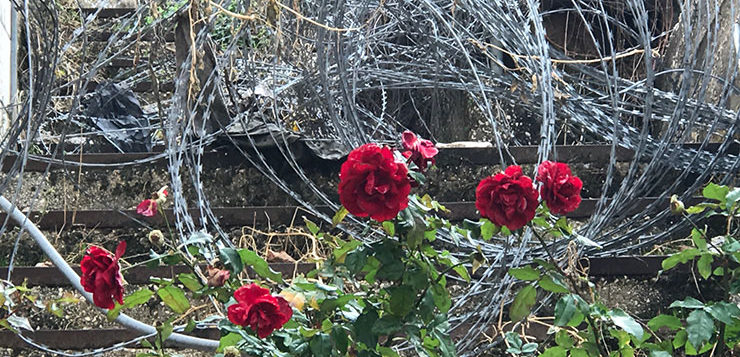In December 2016, New Matilda editor Chris Graham travelled to the Middle East, his first visit to Palestine. What he found shocked him, but not so much for the depth of poverty and oppression, but rather for how much it reminded him of the remotest parts of Australia.
In his 2013 documentary Utopia, Australian journalist John Pilger looks at the state of Aboriginal Australia following the Northern Territory intervention, a cynical government policy launched in the lead up to the 2007 federal election.
The aim of the NT intervention, according to then prime minister John Howard, was to arrest an alarmingly high rate of child sexual abuse in remote Aboriginal communities. Sexual violence against children is a problem in some Aboriginal communities, just as it is a problem in some non-Aboriginal communities.
But the NT intervention was never really about child welfare. It was a political manoeuvre designed to win votes, a fact conceded, surprisingly, by former foreign affairs minister Alexander Downer in the election’s aftermath.
By way of declaration, I was an associate producer on Utopia. Even after a decade and a half writing about Aboriginal people, I was still shocked by what I saw and heard as we travelled through the NT and beyond, documenting the parlous state of Aboriginal affairs.
One of the people featured in the film is Professor Jon Altman, a renowned economist and anthropologist with more than 40 years’ experience working in, and with, Aboriginal communities. Altman, an optimist by nature, told Pilger that he had little hope the Australian government would ever find a way to lift Aboriginal people out of poverty.
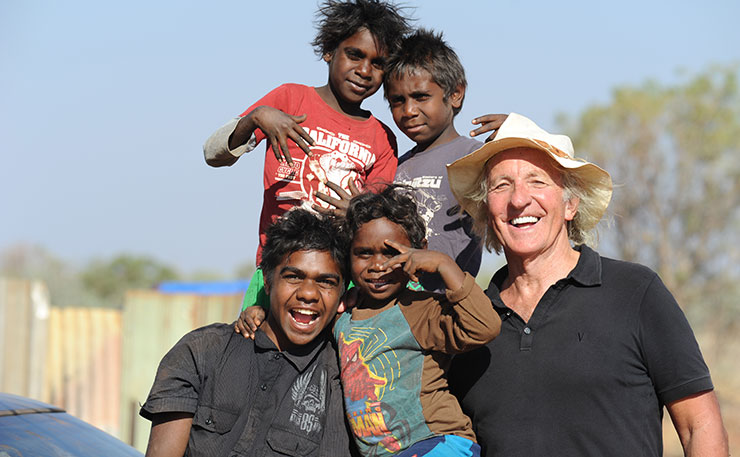
“Sometimes, in my darker moments,” he said, “I actually think addressing the Indigenous problem in Australia is beyond the capacity of Australia, and that we actually need overseas aid.”
It was an extraordinary statement, given that Aboriginal Australians comprise less than 3 per cent of the population of one of world’s wealthiest countries. How is it that a nation that has built so much for so many can provide so little for so few? It is a question I have tried to answer many times in the course of my career.
Utopia inspired me to redouble my efforts to report on the failings of a nation that has never made peace with its First Peoples. The film was also the realisation of a childhood dream: I had grown up reading Pilger – he was one of the reasons I went into journalism.
As it transpired, I realised another dream three years later, in 2016, when I travelled to the West Bank for the first time, having spent years learning about the struggle of the Palestinian people against Israeli occupation, much of it, again, written or filmed by Pilger.
What I didn’t realise is that the two events would ultimately collide – at least in my own mind. I knew my visit to Palestine would be confronting. Yet, while I was somewhat prepared for what I would see, I wasn’t prepared for what I would learn, although not for the reasons you might think.
On my return from Palestine, I realised that what I had witnessed there was hardly different to what I see in Australia every day. Less overt, perhaps, but no less tragic.
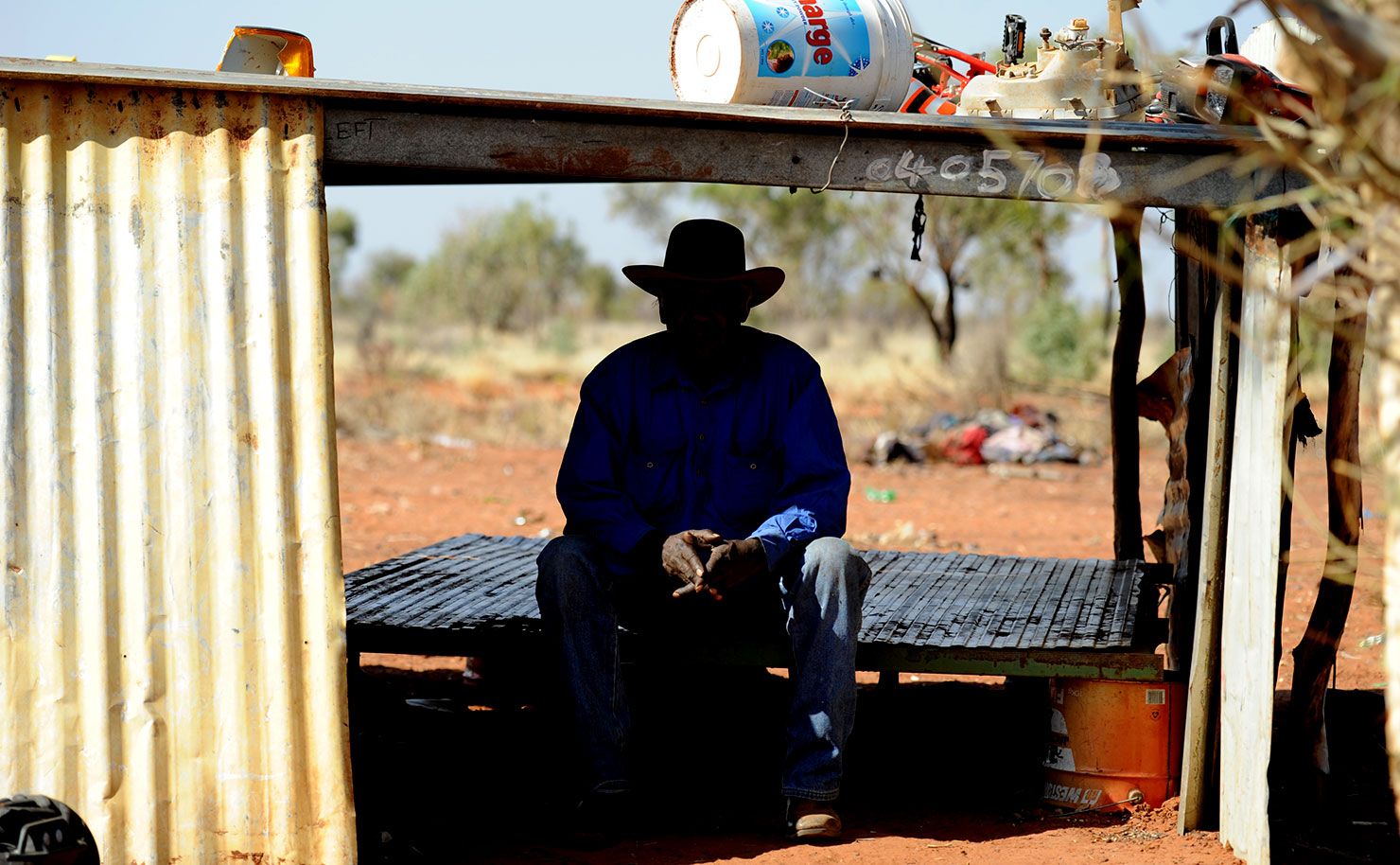
I should explain that this article is not an attempt to pit the suffering of Palestinians, which is as extreme as any people on earth, against that of Aboriginal Australians. Rather, it is an attempt to show that while open slaughter – like that routinely perpetrated by Israelis against Palestinians – almost always sparks revulsion and frenzied media coverage, the slow, deliberate, socially engineered suffering of Aboriginal people rarely raises an eyebrow. And yet the end result is the same.
Whether you die at the point of a gun, engaged in a running battle to win back the right of return, or whether you die from neglect and preventable diseases on your traditional lands, or in a police cell, or at your own hand, you are still dead. A death is a death. A life of misery is a life of misery.
Since visiting Palestine, I have been thinking less about how we fix the suffering and neglect in Aboriginal communities and more about why it continues.
MY TRIP to Palestine actually began in neighbouring Lebanon, home to around 450,000 Palestinian refugees. When I arrived in Beirut, I discovered it was also home to a substantial and ever-growing number of Syrian refugees.
On my first night, I went for a walk to take in the city. It was almost 10pm by the time I made my way back to the hotel. I hadn’t realised, but a young Syrian woman whom I had earlier seen begging had followed me. She was carrying a baby and caught up to me as I neared the hotel doors.
She thrust her daughter towards me and, in broken English, one hand extended, repeated, “Suriya. Please. Suriya. Please.” I gave her all the money I had, then rushed into the hotel and headed straight for my room. I am not generally a crier, but that night I wept, wondering how I would get through the trip, both emotionally and financially. I thought I was prepared for Palestine, but I was already deeply upset and I had not even arrived there.
The next morning, still a little shaken, I went to visit the Bourj el-Barajneh refugee camp, in the outer suburbs of Beirut. Bourj, as locals call it, was established in 1948 at the end of the Palestine War, when Jewish militias and the Israeli military forced some 700,000 Palestinians to flee their homes.
Arabs call it the Nakba – the catastrophe.
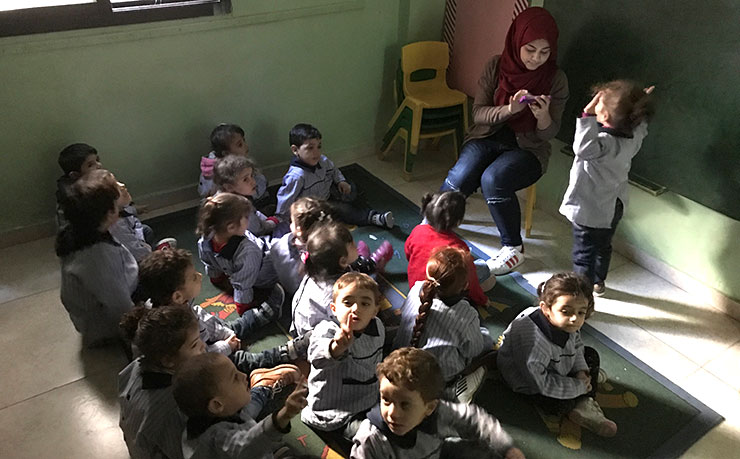
The scenes you may have seen unfold on your television screens in May – where, over the course of six weeks, more than 100 unarmed Palestinian protestors were shot dead by Israeli snipers (more than 12,000 more were injured) – were commemorations of that event, 70 years ago. The protests called for Palestinians’ right of return, currently prohibited by Israeli law. If your family fled during the Nakba, then you have no legal right to return to Palestine.
Only one square kilometre in size, Bourj was built to house 10,000 people. Today, at least five times that number call it home, including an increasing number of Syrian refugees.
The camp is hopelessly overcrowded, but Palestinians are a resourceful people. With limited land to expand outwards, they have instead built skywards. The camp is now a mix of narrow alleyways set amongst rambling four- and five-storey buildings.
Wires are strewn wildly throughout the camp, about a feet or so above head level, and at least one person a month dies from electrocution. Collapsing buildings are another common cause of death. Otherwise speaking, the camp is comparatively safe; there is semblance of normality there, albeit one shaped by poverty. Of course, should an earthquake ever strike near Bourj, the results would be catastrophic.
A few days later, I arrived in Jordan, where I met the group with whom I would tour Palestine – nine Australian journalists, on a delegation organised by the Australian Palestinian Advocacy Network.
Amman, the capital, is located on a high plateau above the Jordan Valley. The drive down to the famous Jordan River is stunning – and extreme. So steep is the decline that your ears pop several times as you descend, and you finish several hundred metres below sea level.
We arrived at the Allenby Bridge – the sole crossing into the occupied West Bank – late in the afternoon. It would take another eight hours to get through the Israeli checkpoints and arrive at our hotel in Jerusalem.
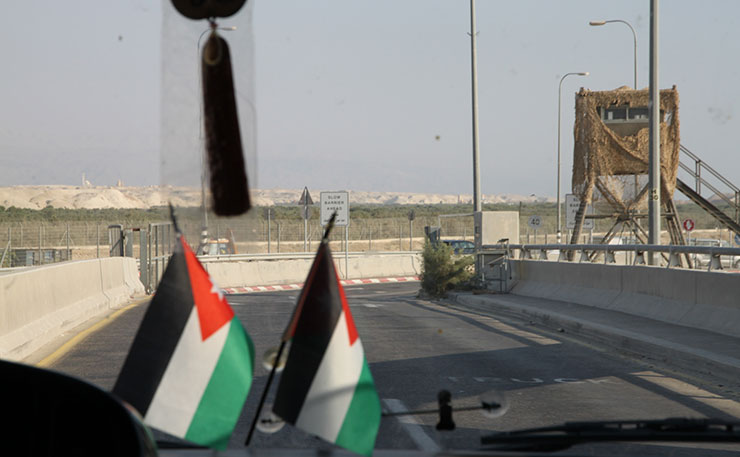
I had been warned about the rudeness of Israeli immigration officials, and I wasn’t disappointed. When you cross the Jordan River into the West Bank, you arrive at a heavily fortified Israeli compound and join a queue that snakes through multiple rooms. Hundreds of Palestinians were already lined up like cattle, waiting to be processed. Eventual passage through the one X-ray machine leads to a new line, just as long and just as slow. Luggage was strewn everywhere. Beyond the lines and armed officials, there was no real attempt to create anything like a semblance of order.
If the process of entering Palestine is designed to be dissuasive – and it is – then the reality of living there is something else altogether. For the next 10 days, our group travelled throughout the country, witnessing the extreme laws regulating all aspects of Palestinian life.
Israel seized the West Bank – a strip of land about half the size of greater Sydney – from Jordan in 1967, during the Six-Day War. It has been occupied by Israel ever since. Under international law, a nation is responsible for the welfare of all citizens in all territories it occupies. In the case of the occupied territories, Israel rules over more than 2.5 million Palestinians (not counting East Jerusalem).
Also, according to international law, Israel is not permitted to annex any more Palestinian land. Despite this, over the past 50 years, it has moved hundreds of thousands of Jewish residents across the borders of Israel into more than 130 ‘settlements’ in the West Bank. There are now over 120 officially recognised Israeli settlements, and many more unofficial ones. Every day, Israel seizes more and more Palestinian land, all the while assuring the international community that it remains committed to negotiating a workable peace treaty.
In the West Bank, virtually every facet of Palestinian life is controlled by Israel, and the divisions are deep. Separate roads have been built for the exclusive use of the illegal Israeli settlers. The settlements – some of them cities with their own universities – are heavily fortified and are guarded by Israeli soldiers and police.
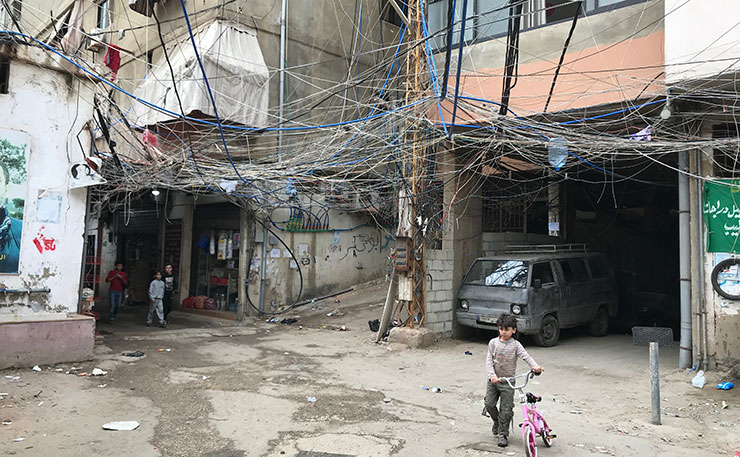
Palestinian vehicles are issued different coloured number plates, making them easier to stop and search. Hundreds of barriers and checkpoints exist across the region to further restrict movement.
Even marriage is closely monitored by the Israeli government. Arabs marrying Jews face significant administrative hurdles, and it happens rarely. The list of laws is almost endless, as we discovered as the trip unfolded.
Our first day took us to a small community and school on the outskirts of Jerusalem, overlooked by a Jewish settlement on a nearby hill. The Palestinian community faced a constant threat of expulsion, and endured almost daily harassment by Israeli officials.
Further north, we stopped at a small town where a Palestinian family had, only days earlier, watched as its business was flattened by Israeli bulldozers. Almost two dozen small shops, according to Israeli officials, had been built on the edge of land marked ‘Area C’ – occupied Palestinian land, on which Israel permits no construction. The shops, said the family, had been there for years. The land, apparently, had either been rezoned, or the Israelis had only just noticed the buildings. Either way, an appeal to the Israeli courts proved fruitless, as it almost always does. The Israeli military arrived one morning in December and flattened the lot. The owner’s father was airlifted to hospital after being assaulted by Israeli soldiers.

The Oslo II accord divided the West Bank into three administrative divisions: Areas A, B or C. Land in Area A is under Palestinian control. It comprises less than 20 per cent of the West Bank. Land in Area B (22 per cent) is administered by Israel, with some Palestinian involvement. Area C, which makes up more than 60 per cent of the West Bank, is controlled entirely by Israel. Area C building permits for Palestinians are rarely approved (less than 2 per cent of applications are successful) and demolitions of Palestinian properties are common.
Further up the road, we met a Palestinian family whose home had just suffered this very fate. Their possessions – children’s toys, a couch, a few random pieces of furniture – were scattered in the dirt, amidst the rubble of their house. The family, with three young children, had also transgressed ‘Area C’ laws. They had no idea where they would go. We took up a collection for them. It was a quiet ride back to the hotel.
We also toured East Jerusalem, where the roads crumble and services are scarce. It borders Israeli-controlled West Jerusalem, a world-class city boasting trams and shopping malls and fairy lights.
Travelling Israel and the West Bank, it is impossible to ignore the occupation, although without a guide it is sometimes hard to know what you are or aren’t seeing. The ‘security fence’ – a massive concrete wall not dissimilar to the one proposed by Donald Trump for the US-Mexico border – is visible from around the city. As with so much of what Israel does, the wall is in violation of international law.
Towards the end of our trip, when we arrived in Hebron, the reality of life in the occupied territories became even starker. While parts of Hebron are controlled by the Palestinian Authority, the city’s economic hub is sealed off and controlled by Israel. Over time, small groups of Jewish settlers began buying property in the Old City, a part of Hebron built more than 1,000 years ago. In order to provide security to them, Israel closed Hebron’s main commercial market, forcing thousands of Palestinians from their homes and businesses.
That section of Hebron – several kilometres long – is now a ghost town. The structures remain, but the shops are boarded up and the streets are empty. It is a surreal experience walking through it: heavily armed soldiers patrol the streets, and snipers nests are visible from the top of buildings. The privilege of passage is sometimes afforded to Palestinians: those seeking entry must first produce identity papers and then be shadowed by Israeli soldiers and armoured personnel carriers. At the other end, you emerge through heavy steel gates and back into a thriving, albeit spectacularly overcrowded, hub of economic activity.
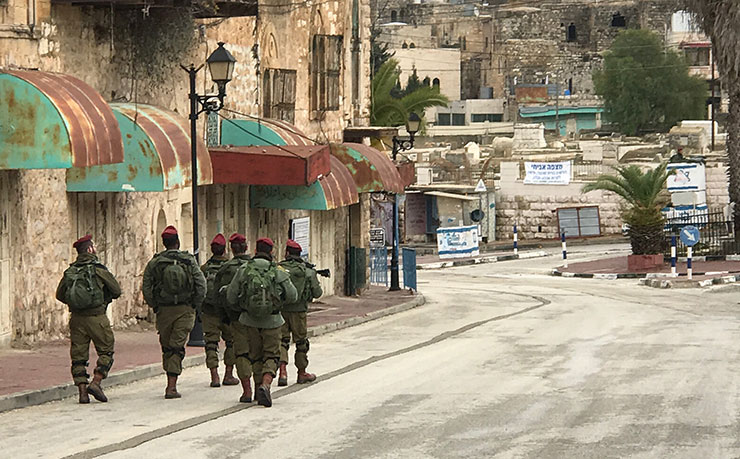
It was this economic activity that most surprised me about the West Bank. While the oppression is sometimes overt, like the restriction of movement in Hebron, the poverty is not. At least it is not a type of poverty that is as obvious as the oppression. While there is clear, seething anger from the population of the West Bank about the way they have been treated – and are still treated – as well as occasional outbreaks of resistance against Israeli control, Palestinians mostly go about their day-to-day business, trying their best to avoid Israeli contact. They just want to be left alone to build a life, free from Israeli harassment.
Even the poorest areas of the West Bank – the refugee camps for internally displaced Palestinians – didn’t look as poor as I expected. And, as the trip unfolded, I couldn’t escape the nagging feeling that I had seen a lot of this before. Or at least a version of it.
ONE of the most effective ways to measure relative poverty is to look at the life expectancy of a particular population. In Israel, life expectancy for someone born in 2016 is 82.5 years – one of the highest globally. It is quite a different story for Palestinians living in the occupied territories. The gap is around 10 years, and much worse in certain regions. Mortality and maternal death rates are also four times higher than those for Israel.
I looked up these figures while still travelling, convinced that what I was seeing bore a striking resemblance to what I routinely see back home: a system of extreme (and sometimes not so extreme) state control, justified as necessary ‘security measures’.
Life expectancy in Australia is almost identical to Israel. A white Australian born in 2015 can expect to live 82.45 years; an Aboriginal Australian, by contract, is likely to die 10 years earlier.
Just as you can ignore the Israeli occupation forces in Palestine if you try hard enough, you can ignore the controls we have created in Australia. In fact, it’s easier to do so here because the ‘security measures’ are even less obvious. But they are there – if you care to look.
In Australia, we don’t build separate roads for the exclusive use of whites; we just fail to maintain roads that go almost exclusively to black communities. By way of example, if you head west from Alice Springs, you will find a world-class network of sealed highways servicing a strong domestic and foreign tourist market. But if you drive east, where there are relatively few tourist attractions but plenty of Aboriginal communities, you will be greeted by poorly maintained dirt tracks. They aren’t even properly formed roads, just bulldozed lines that, during heavy rain, turn into creeks and sometimes lakes.
In Australia, we also don’t build settlements exclusively for whites. Anyone can buy or own land in Australia. In theory. But that has not always been the case, and remnants of our apartheid-style land-tenure system live on in many parts of the country. In Alice Springs, there are more than a dozen Aboriginal town camps. They were built in the 1960s to ensure Aboriginal people stayed out of white areas. These sorts of camps exist all over New South Wales and Queensland, too. The standard of housing almost always bears no resemblance to the standard of housing in the nearby town.
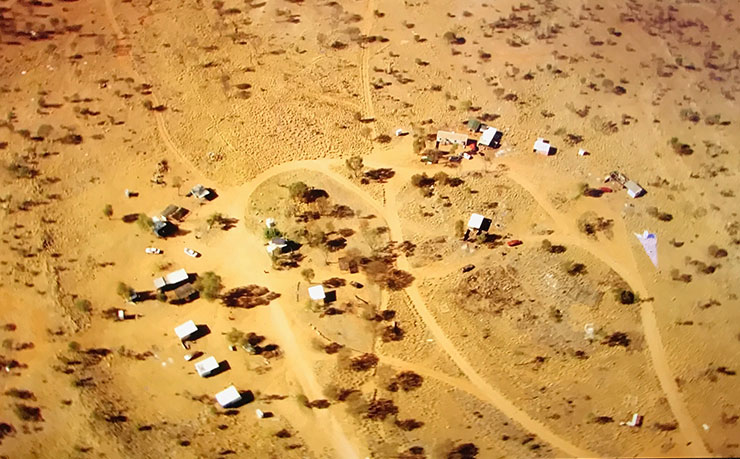
Like Palestinians, Aboriginal people no longer have control over their own housing. At the height of the NT Intervention, the government seized community-controlled assets, including housing, and now determines who lives where and how much rent they pay. There is no early morning bulldozing, simply because it is not needed anymore.
The use of security apparatus in Australia also bears a striking resemblance to that in Palestine. In the occupied territories, the Israeli police and military stop and search Palestinians at will; Australia uses an almost identical system of control, albeit without armoured personnel carriers and military assault rifles.
I have spent days documenting Aboriginal people being stopped and searched, or being moved on from public places. In 2011, I filmed an Aboriginal woman purchase a bottle of water in the main shopping centre of Alice Springs. She sat down in the food court to drink it, but was physically moved on by a security guard. I have filmed police and security guards shoo Aboriginal people out of public areas, sometimes into pouring rain. I have filmed Aboriginal people refused entry to shops and bars by virtue of the fact they are Aboriginal. I have filmed Aboriginal people sitting in parks have their bags and possessions searched, sometimes multiple times in a single day.
In 2010, the Alice Springs council removed water taps from Todd Mall – the town’s premier tourist strip – to dissuade Aboriginal people from milling about. A raft of by-laws were also introduced to ensure homeless Aboriginal people sleep far enough out of town so as not to bother tourists or locals. Part of the new measures included impounding or disposing of ‘abandoned’ items such as blankets, and tough fines for begging.
Most of these things occur daily. They happen in towns across the NT and beyond. And they are just the tip of the iceberg.
One of the major differences between Palestine and Australia is a social safety net. But Australia’s welfare system works differently if you are Aboriginal. As part of the NT Intervention, the government introduced a ‘black only’ system of welfare centred on the ‘BasicsCard’, an ATM-style card that limits how and why welfare entitlements could be spent (for example, on things like food, clothing and medical items, and only at government-approved retailers).
A 2010 senate inquiry revealed widespread starvation across the NT when the card was introduced. The system also resulted in separate lines in supermarkets – one for Aboriginal people on BasicsCards, and the rest of the lines for whites.
That same year, I visited Utopia with Bev Manton, chairwoman of the NSW Aboriginal Land Council. The trip was going to take several days and so we were stocked up with food. The NT Intervention was three years in and food was still scarce in many remote communities. At one community, Camel Camp, an outstation of a few dozen people, Bev went to the rear of the vehicle to grab some bags of groceries to offer the residents. What followed was reminiscent of a UN food drop in a war zone.
That same community had wood-fired water heaters, in a region where the night-time temperatures can drop to zero.
About 70 kilometres away, in Arlparra, dozens of people were living in a humpy camp just metres behind a set of well-appointed government dongas. These had been built for the exclusive use of visiting government officials and lie empty for most of the year.
Not unlike Israel, Australia is sensitive to international criticism about our treatment of the people we colonised. And not unlike Israel, Australia has been repeatedly condemned by the United Nations for it. To counter such criticism, Australia expanded the BasicsCard system to trial sites around the nation so that, technically speaking, it was no longer just Aboriginal people subjected to the new laws.
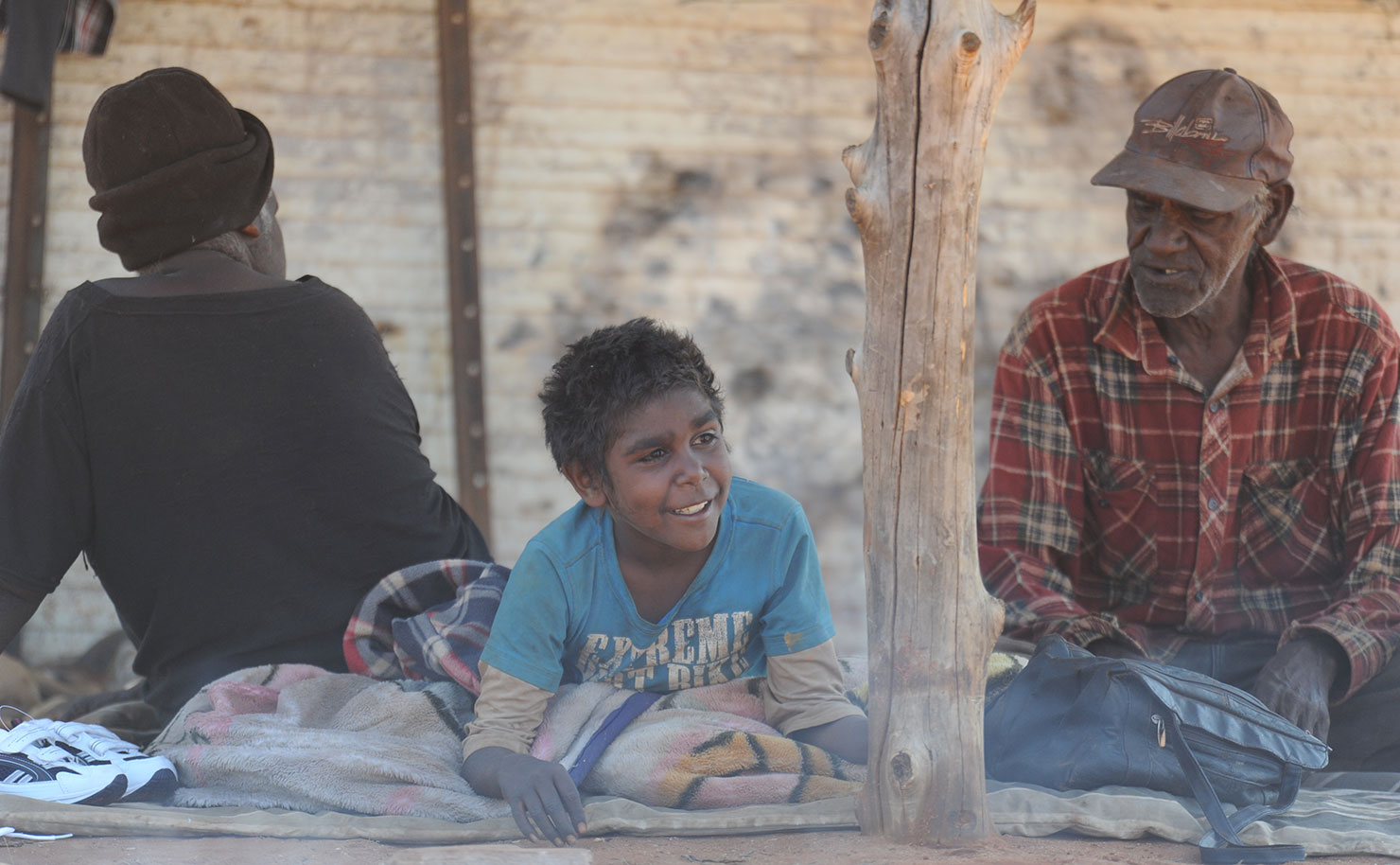
Australia even has its own system of land control. It is not all that dissimilar to Israel’s Areas A, B and C classification system, although it is much more subtle.
Aboriginal people who win native title are granted a form of land tenure that is substantially inferior to that enjoyed by non-Aboriginal people. In many cases, native title ‘ownership’ does not come ‘to the exclusion of all others’. For example, you might simply win the right to hunt or perform ceremony on land owned by someone else.
Our government also uses funding as a weapon to depopulate Aboriginal lands. A few years ago, the West Australian government announced it would no longer fund infrastructure and municipal services in homeland communities – small Aboriginal communities in remote areas. These communities have been grossly underfunded for decades, despite numerous public and private studies, including one by the Menzies School of Health Research, showing that Aboriginal people ‘living on country’ are healthier and live longer. Federal funding to remote outstations has always been woefully inadequate, and the Commonwealth is increasingly trying to force the states to pick up the tab.
These laws and regulations are nothing new. Nor is the reality of Aboriginal suffering. We have known all this for decades. And yet it still happens. Just like in Palestine.
OPPRESSION and poverty are not Olympic sports; there are no gold medals for the most people brutalised, tortured and dispossessed. The suffering of Palestinians today is extreme. Their slaughter is often overt, and a lack of action from the international community allows it to continue. Israel knows that after every slaughter, there will be no real sanction. Indeed, after its most recent outrage – the brutal suppression of the Nakba commemorations – Australia and the US voted against a mere investigation into those killed and injured.
The ongoing destruction of Aboriginal lives is not all that different. It is just achieved, mostly, through official neglect rather than blunt force.
Unlike Israel, we no longer shoot unarmed Aboriginal protestors, although we do occasionally kill Aboriginal people in brutal ways. Mulrunji Doomadgee was beaten to death on the floor of a police station in 2004. Mr Ward, an Aboriginal man from the remote regions of WA, was cooked to death in the back of a prison van in 2008. In 2014, Ms Dhu, a young Yamatji woman also from WA, was left to die an agonising death in a police cell in Port Hedland, despite pleading for help over several days. Mr Briscoe lay dying in a police cell in Alice Springs in 2012. He had been taken into ‘protective custody’, ostensibly for his own good. Police surfed the net and listened to music while he suffocated, ignoring other prisoners’ cries for help. But mostly we achieve the subjugation of Aboriginal people through wicked indifference and official neglect.
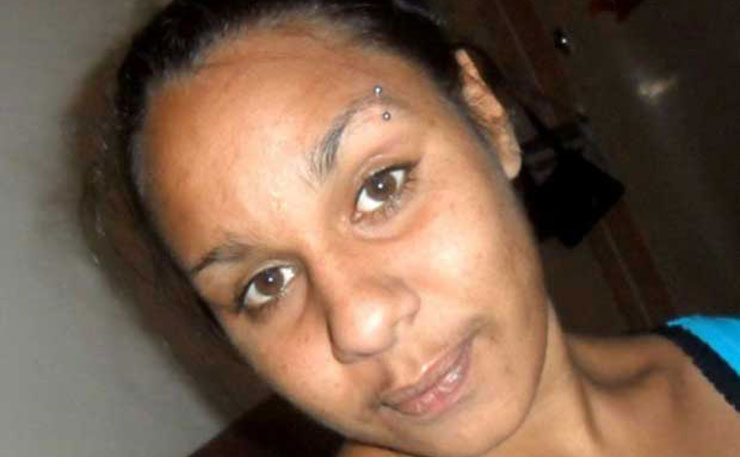
We have, for decades, sought to ensure that the spending we direct to alleviate Aboriginal disease and poverty is never quite enough. Why? Because in a democracy like Australia, elections aren’t won by spending money on ending Aboriginal poverty. That is how elections are lost.
Suicide rates among Indigenous youth are among the highest on earth. Children as young as nine have taken their own lives. While I was filming in the Utopia region, a 10-year-old boy took his own life. Violence – sometimes self-inflicted, sometimes not – is endemic in some Aboriginal communities. And yet, in the most recent federal budget, only $18 million was earmarked for domestic violence interventions targeting Indigenous communities. At the same time, Canberra promised $50 million to build a monument and visitors centre commemorating Captain James Cook, the man whose actions led directly to the dispossession of Aboriginal people. All of this will be happening in Prime Minister Scott Morrison’s own seat of Cook.
While filming in Ampilatwatja, a man in his mid-30s suffered a cardiac arrest brought on by rheumatic heart disease. He lived in a humpy on the edge of town, which is also where he died. Rheumatic heart disease – which occurs at the highest recorded rate on earth in Aboriginal communities – is a direct consequence of poor hygiene in overcrowded conditions. And yet, in the same budget, the Turnbull government promised tax relief worth more than $30 billion to mostly middle- and high-income earners, walking away from enough money to end overcrowding in Aboriginal communities several times over.
Similarly, trachoma – a disease eradicated in most developed countries – still plagues Aboriginal communities, and not just in the NT. It hasn’t even been eradicated in NSW. It still exists in Gaza, too, although unlike in Australia, this is not due to neglect. It is engineered through Israeli occupation: restricting access to the basic necessities of life, like clean water, has been official Israeli policy for a decade.
Which brings me back to Palestine. My trip there, above all, made me realise that while there are many ways to oppress a people, the brutality of that oppression is directly proportionate to the level of threat that the state believes it faces.
In the West Bank and Gaza, there are almost four million Palestinians to control, and millions more in refugee camps in neighbouring countries. Israel does, in reality, face a grave threat, although it is impossible to escape the reality that Israel has played a major role in creating that threat.
Israel has built a blunt, overt system of apartheid; Australia has built a polite, covert system of apartheid. Rather than banning the blacks from living in town, we simply create economic circumstances that make this unlikely.
Aboriginal people have always represented a threat to white Australia’s way of life, but that threat has diminished over time. Aboriginal people’s Nakba occurred hundreds of years ago, and today they number just 650,000 in a population of more than 24 million. They are hopelessly outnumbered. Even more importantly, they are outnumbered by a population that genuinely believes Aboriginal people are the cause of their own poverty.
In 2011, Amnesty International Secretary-General Salil Shetty toured remote Aboriginal communities in the NT. Utopia was among them, and Shetty was subsequently asked to appear in Pilger’s film.
“I think it is quite shocking that you can have this level of poverty and this level of lack of basic facilities in one of the richest countries in the world. Australia can easily resolve problems here,” Shetty said. “If you take the Utopia community… the total population is only 1,400. If you take the Aboriginal communities in the Northern Territory as a whole, you are not talking about more than 50,000 people or so. So to suggest that after decades that we can’t solve this problem, in a country that is absolutely not short of resources, means that the problem is somewhere else.”
The problem is obviously not in Palestine. But for me at least, Palestine did provide, if not solutions, some epiphanies.
One of them was that Altman, in his darker moments, was right after all: Australia can’t resolve the ‘Aboriginal problem’ by itself, any more than Israel genuinely intends to broker peace with Palestine.
Just as Israel will only be brought to heal when the international community acts to intervene, the same is true of Australia.
* This article by New Matilda editor Chris Graham first appeared in the Winter 2018 edition of Overland Magazine. It is reprinted here with permission.
Donate To New Matilda
New Matilda is a small, independent media outlet. We survive through reader contributions, and never losing a lawsuit. If you got something from this article, giving something back helps us to continue speaking truth to power. Every little bit counts.

